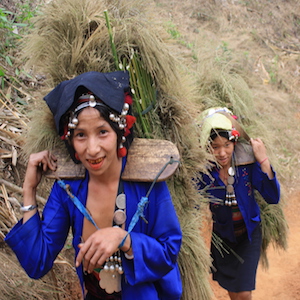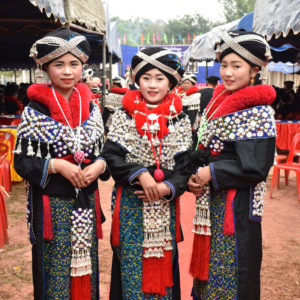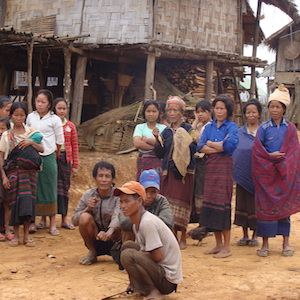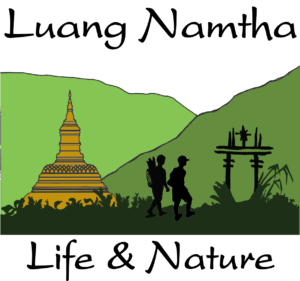Ethnic Diversity
Living Heritage
Luang Namtha is home to around 17 different ethnic groups, making it a remarkable repository of ethnic diversity and indigenous knowledge. The traditional clothing, handicraft, livelihood systems and rituals of these communities are a valuable part of the province’s cultural heritage.
The Akha are the larger of the groups, around 25% of the provincial population, mainly inhabiting upland areas in Muang Sing and Muang Long districts, with some in Namtha. The Khmu are the next largest group, also around 25%, followed by Tai Leu which account for around 12%. Some of the oldest continually inhabited villages are Tai Leu villages in the northern reaches fo Muang Sing district. Other Tai groups including Tai Dam, Tai Khao and Tai Daeng account for 10% of the population living mostly in the Namtha Valley. Ethnic Lao make up a very small percentage of the population.
With such diversity it’s a wonder they have all lived so peacefully together, but one reason maybe low population density. They have all been able to support a subsistence lifestyle with the natural resources available. Today this lifestyle is under threat with the introduction of commercial agriculture and encroaching market economy.
Akha
The Akha are a Tibeto-Burman speaking ethnic group that first appeared in Laos around the mid-19th century. Akha life is characterised by a ritual and ethical code which provides them wit strict guidelines on how to live their lives – this is sometimes called the “Akha Way” (Akha zang). The “Akha Way” not only includes all the Akha traditions, ceremonies and customary law, but it also determines how they cultivate their fields, hunt animals, how sickness is viewed and treated, and the manner in which Akha people relate to one another and outsiders. The Akha have an amazing knowledge of the forest adn rotational agriculture with many villages still located high in the mountains. Akha women are recognisable with their distinctive costumes consisting of black cotton mini-skirts and black tight-fitting bodices covered by jackets decorates with embroidery and applique designs, topped by an intricate head-dress. Although today in many villages closer to the towns this is often mixed with modern clothes, or worn only for ceremonies.
Tai Leu
The Tai Leu are linguistically linked to the Lao and other Tai-Lao speakers such as the Tai Dam and Tai Daeng. Originating in southern China, the Tai Leu began settling in present day Muang Sing (Xieng Kaeng) in the 15th century. They are known for their beautiful many-stilted houses with long sloping roofs, potent alcoholic rice spirits, and intricately woven cotton textiles. They practice Theravada Buddhism and each village will have a Buddhist temple with resident monks. Most Tai Lue males are ordained for a short time of their lives, at some point, spending time in the temple. In the centre of each village is a sacred Village Pillar where rituals that predate the arrival of Buddhism are held.
Khmu
The Khmu or their ancestors probably settled the are of present-day Laos several thousand years ago, and are one of the most populous ethnic groups in Laos. Part of the Mon-Khmer brance of the Austro-Asiatic linguistic family, the Khmu are divided into many sub-groups including the Khmu Lue, Kwaen, Rok and Ou, with the majority of Khmu in Luang Namtha being Kwaen or Rok. They practise their own form of animism.
In Luang Namtha, the Khmu practice mixed economies, growing rice, hunting, gathering forest products and producing woven bamboo and rattan handicraft. They have a strong knowledge of medicinal plants. Tourism has become an important source of income in Luang Namtha and Vieng Phouka districts, with tourists visiting their villages, and hiring the local Khmu guides. If you trek the Ban Nalan Trekking Trail you will be supporting Khmu families.













 Users Today : 62
Users Today : 62 This Month : 956
This Month : 956 This Year : 39589
This Year : 39589 Total Users : 85317
Total Users : 85317 Views Today : 160
Views Today : 160 Who's Online : 1
Who's Online : 1